The definition and Development History of Fine Coffee beans how to brew Arabica Coffee beans
The high-quality coffee in modern times can be divided into three stages.
First wave (1940-1960): the key word at this stage is the instant melting of coffee.
The invention of instant coffee was invented and patented by New Zealander David Strang in 1890. In 1901, Satori Kato, a Japanese-American chemist, created instant mixed coffee. In 1938, Max Morgenthaler spent seven years perfecting its freeze-dried instant coffee, which gave birth to Nestle Coffee. Nestle Coffee benefits here, and the company is growing rapidly. The popularity of instant coffee was during World War II. Because of its refreshing effect, the US military incorporated coffee into military materials. Later, when World War II was won, soldiers thought that coffee played an important role in it. So they retained the habit of drinking coffee and brought it back to daily life. With the introduction of commercials on American television stations, sales of instant coffee have also skyrocketed. At that time, coffee gradually became a necessity in people's lives.
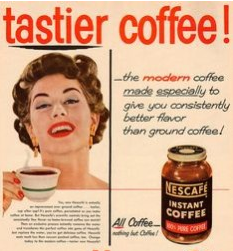
The second wave (1966-2000): coffee boutique.
In 1966, boutique coffee came to the United States. Alfred Peet, the son of a Dutch coffee roaster, owes coffee roasting to North American customers. Born in the Netherlands, he travels the world as a taster and buyer for various coffee and tea companies. When his career finally brought him to the United States, he found that American coffee was of poor quality, so he started baking his own coffee-soon after opening Peet's Coffee&Tea in Brooklyn, California. He aroused his desire for deep-roasted coffee between ardent scholars and discerning coffee vultures, who were eager to taste more flavor than just a light cup of coffee sold on the market at the time. He also tutored Jerry Baldwin, Zev Siegl and Gordon Bowker in his own baking style. The three young men later became the founders of Starbucks, bringing deep baking to Seattle. In 1983, Howard Schultz Howard Schultz visited Italy and was inspired by the country's espresso bar and brought espresso technology back to the United States. Starbucks quickly promoted its brand, giving it more than 20,000 stores in 63 countries. At the same time, Starbucks will incorporate the concept of "third space" into its corporate philosophy, and become one of the places that people must go for leisure, work and entertainment.
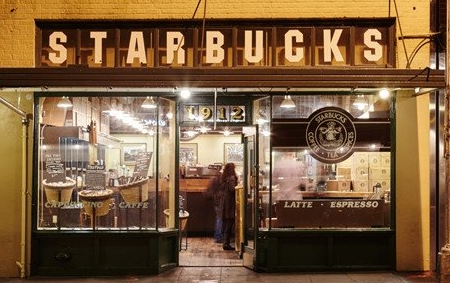
The third wave (2003 ~ present): coffee aestheticization
Return to the original taste of coffee: emphasize "medium and shallow roasting" and pursue the original flavor of coffee. Coffee is essentially a kind of berry, originally with bright sweet and sour flowers and fruits, traditional roasting more than coke-style re-roasting, so that the original flavor of coffee is lost, leaving only coke aroma.
Pure, black coffee: let the coffee speak for itself, remove sugar, milk and other unnecessary seasoning, return to purity. The coffee flavor of different estates has its own characteristics. No matter the coffee is filtered and hung, or the coffee beans are brewed, the utensils are only the choice of means of expression. Pure black coffee can show the characteristics of each manor, and enjoy the ultimate flavor and health.
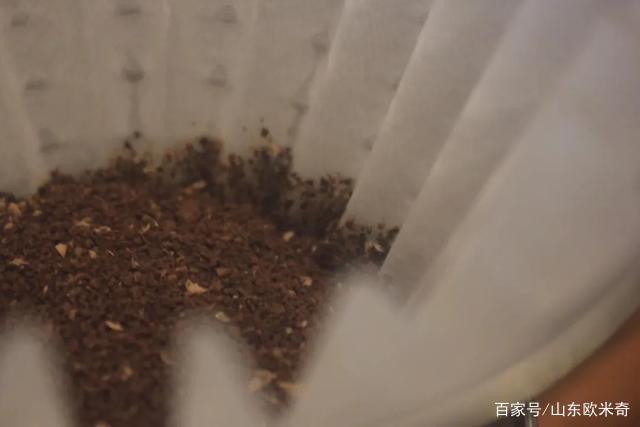
Social care, avoid exploitation: the manor managed by brand realizes the ideal of producers' transparency and consumers' direct contact with producers. At present, the third wave of coffee revolution has also broken through the traditional transaction mode, such as direct trading, fair trade, online platform bidding. Not only will consumers be more secure, but coffee farmers will also be protected from exploitation and their lives will be more secure.
Important Notice :
前街咖啡 FrontStreet Coffee has moved to new addredd:
FrontStreet Coffee Address: 315,Donghua East Road,GuangZhou
Tel:020 38364473
- Prev
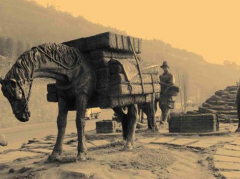
The reason why the British drink black tea the historical story of why the kind of black tea is loved by Europeans
Since it was introduced into the western world, tea has become more and more popular and is now the second most popular drink in the world after water. Throughout history, the demand for tea has been growing because of its good taste, health and medicinal properties, as well as increasingly efficient production and distribution channels. For people who like to drink tea, perhaps the most important benefit of drinking tea is that it can bring to those who drink tea regularly.
- Next
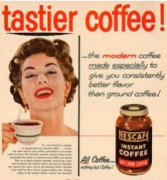
Coffee history-the history of instant coffee, instant coffee production process and origin.
In modern coffee history, the earliest wave of coffee development was instant coffee. The creation of instant coffee was invented by David Strang of new Zealand in 1890 and patented. In 1901, Satori Kato, a Japanese chemist, created instant coffee blends. In 1938, Max Morgenthaler spent seven years perfecting his freeze-drying process.
Related
- Beginners will see the "Coffee pull flower" guide!
- What is the difference between ice blog purified milk and ordinary milk coffee?
- Why is the Philippines the largest producer of crops in Liberia?
- For coffee extraction, should the fine powder be retained?
- How does extracted espresso fill pressed powder? How much strength does it take to press the powder?
- How to make jasmine cold extract coffee? Is the jasmine + latte good?
- Will this little toy really make the coffee taste better? How does Lily Drip affect coffee extraction?
- Will the action of slapping the filter cup also affect coffee extraction?
- What's the difference between powder-to-water ratio and powder-to-liquid ratio?
- What is the Ethiopian local species? What does it have to do with Heirloom native species?

